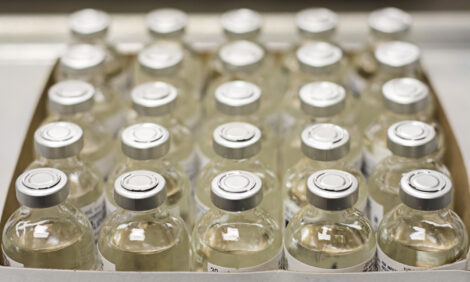



China 90 Per Cent Self-sufficient in Animal Vaccines
CHINA - The Chinese animal vaccine market grew by more than 26 per cent between 2004 and 2013, according to a new report.Animal vaccine is a kind of biological agent that enables inoculated animals to produce active immunity for disease prevention. Europe and the United States and other developed countries are the main force of traditional animal vaccine markets in the world, still taking around 60 per cent nowadays, according to a new report from China Market Research Reports.
In recent years, European and American animal vaccine markets have decelerated growth due to quality safety, high maturity and other factors, while the fast-growing animal vaccine market of China and other emerging countries will become a new highlight.
In 2004-2013, Chinese animal vaccine market size maintained a high growth rate of 26.3 per cent, reaching about RMB11.5 billion in 2013. The growth in 2007-2010 was mainly driven by the expansion of governmental tender vaccine, while that from 2011 was primarily thanks to the market-oriented vaccine expansion. The Chinese animal vaccine market is basically occupied by local companies, showing a self-sufficiency rate of around 90 per cent.
Given the policy factor, Chinese animal vaccine products are divided into compulsory immunization vaccines and market-oriented vaccines. At present, the former include foot-and-mouth disease (FMD), bird flu, porcine reproductive and respiratory syndrome (PRRS), swine fever, and peste des petits ruminants (PPR); the latter refer to porcine circovirus (PCV), Newcastle disease, porcine parvovirus (PPV) and other varieties.
Since 2011, the bids for compulsory vaccines proposed by the Chinese government has turned to be more fierce, with limited growth potential; however, market-oriented vaccines have developed faster, enjoying 40 to 50 per cent market share in 2013.
Key enterprises identified in the report are: CAHIC, Jinyu Group, Tecon, Tech-bank, Shenghua Biok, Ringpu Bio-technology, Dahuanong, Hile Bio, Yikang & Chopper.
According to animal attributes, animal vaccines can be classified into swine vaccines, poultry vaccines, cattle & sheep vaccines, pet vaccines and other vaccines. In 2013, Chinese swine vaccines and poultry vaccines accounted for more than 80 per cent of the animal vaccine market. In addition, the emerging Chinese pet industry is boosting the demand for pet vaccines, but due to lack of commercialised pet vaccines, China now mainly relies on imports. Thus, the Chinese pet vaccine market will see a larger space for development in the future.
As the scale of Chinese farming escalates, the demand for animal vaccines will continue to grow steadily. In the next few years, the Chinese animal vaccine industry is expected to keep a growth rate of approximately 15 per cent and see market value of RMB17.5 billion or so in 2016.
The report adds that, in 2006, China implemented mandatory veterinary drug GMP certification to raise the threshold, resulting in a sharp decline in the number of animal vaccine companies and the accompanying increased industry concentration. In 2013, CAHIC seized the highest market share of 10.5 per cent among Chinese listed animal vaccine companies, followed by Jinyu Group, Tecon and Dahuanong with a combined proportion of 15 per cent or so.








